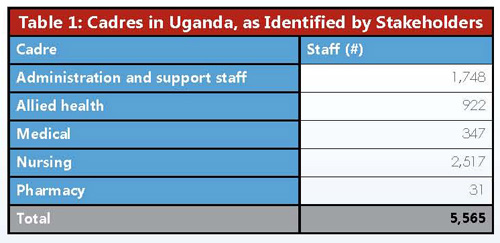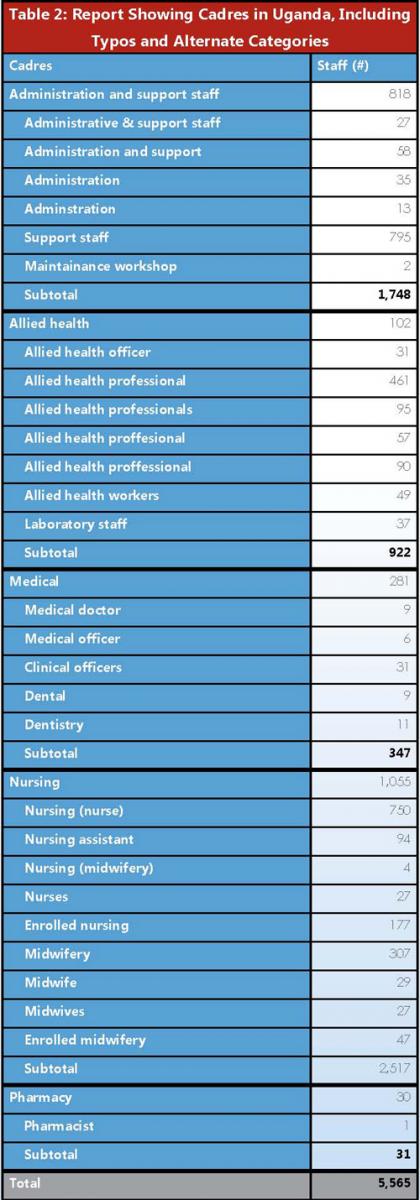Country examples
In Uganda, stakeholders set out to analyze data from the central Ministry of Health, eight national and regional hospitals, and eight districts, totaling 17 data sets and 5,565 health worker records. They identified five cadres (see Table 1) and requested a standard breakdown of the sample by cadre. The differences in terminology and typos caused the system to produce a report on 34 cadres instead of five (see Table 2). Although the original five cadres represent the largest categories, the numerous subcategories illustrate how problems with data quality can make an HRIS difficult to use.

In Kenya, the HIS technical working group had already established a master facility list that all health information systems could use. The HRH technical working group then made sure that the master facility list was used in the HRIS. This consistency has helped ensure that stakeholders are able to map data from different systems to the same facilities. For example, utilization of HIV services in a given facility could be examined alongside the number of health workers trained in antiretroviral therapy in that facility. Kenya’s vision extends beyond the health sector; the Kenya Open Data Initiative publishes the master facility list and many other data sets online (Kenya Open Data 2011).
In Ghana, HRH stakeholders formed a health workforce observatory to produce “data and advice to help the Government of Ghana set direction for the country’s health workforce in the areas of production, equitable distribution, management, and financing” (Ghana Health Workforce Observatory n.d.). Stakeholders wanted to implement an HRIS to track health workers at the facility level and agreed on the application and use of the iHRIS Manage Ghana platform. Furthering commitment to the observatory’s objectives, including using iHRIS, the interactive Ghana Health Workforce Observatory website was relaunched in 2013 as an instrument to accelerate the observatory’s progress and spur implementation of the HRIS and HRH policies.


